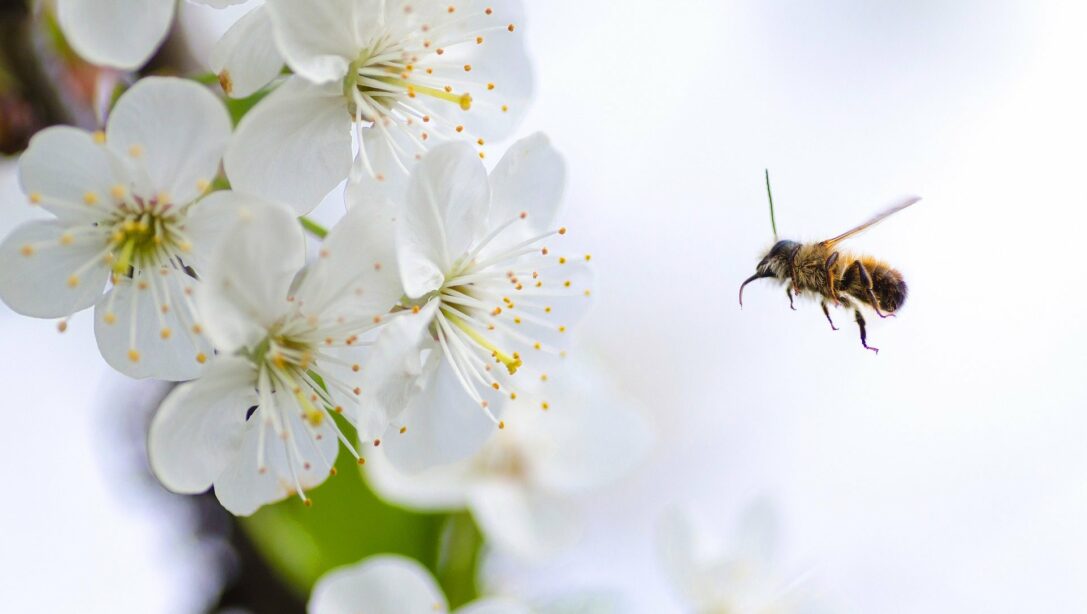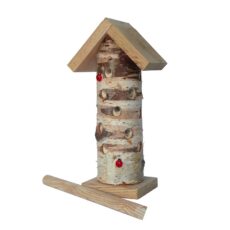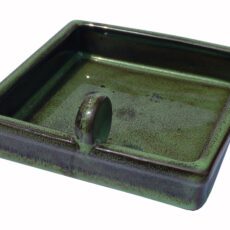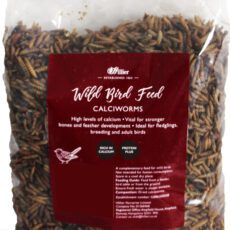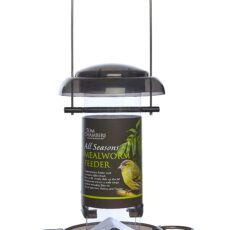For wildlife lovers, April can be an exciting month in the garden. The various trilling melodies of the dawn chorus greet the day and, when the sun shines, insects are increasingly seen zooming between our plants.
Our guide to garden wildlife in April has been created in collaboration with the experts at Wildlife World. Find out what different animal species are doing this month and how you can help them in your garden.
View our collection of wildlife productsBadgers
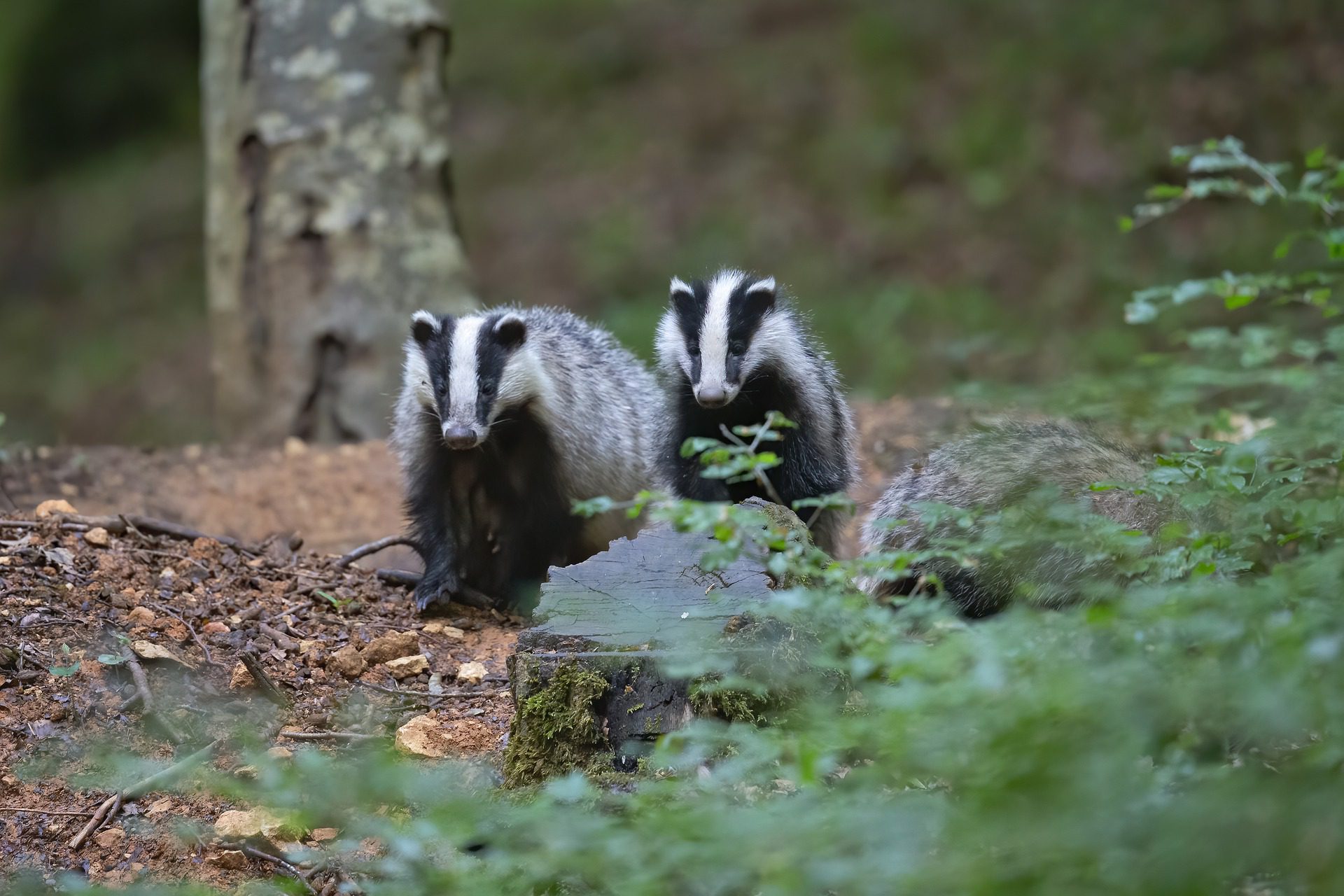
Badger cubs are typically born between late January and early March. They will spend the first two months of their lives underground in their sett, emerging from late April into May. An average litter size is two or three cubs, of which only one is likely to survive to maturity.
How you can help
- Don’t forget that badgers and their setts are legally protected under the Protection of Badgers Act 1992. It is a prosecutable offence to wilfully kill or injure a badger, or cruelly mistreat them, including harming their sett
Bats
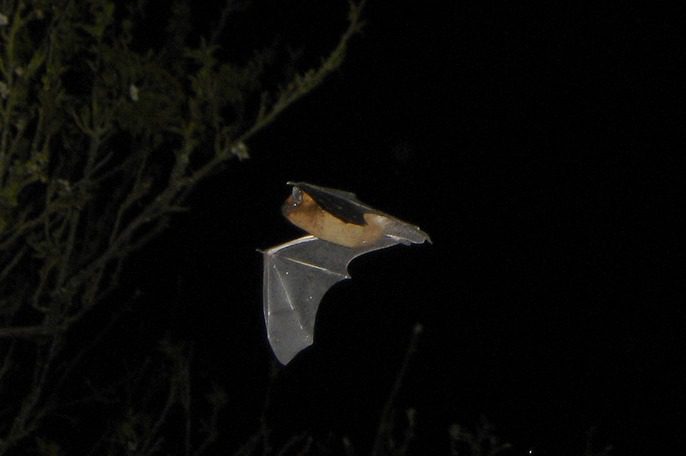
By April, all UK bat species have typically finished their winter hibernation. They will need to build reserves after their winter rest and will fly almost every evening looking for food is the weather is not too cold.
How you can help
- Bats eat insects, so anything you can do to bolster your insect populations will, in turn, support bats. Grow insect-attracting flowers, encourage natural predators instead of using pesticides and have rough areas of logs and leaves that make insect habitats
- Evening light pollution is an issue for bat populations as they like to roost and hunt in areas of low lighting. Keeping outdoor lighting to a necessary minimum at night-time will help
Bees
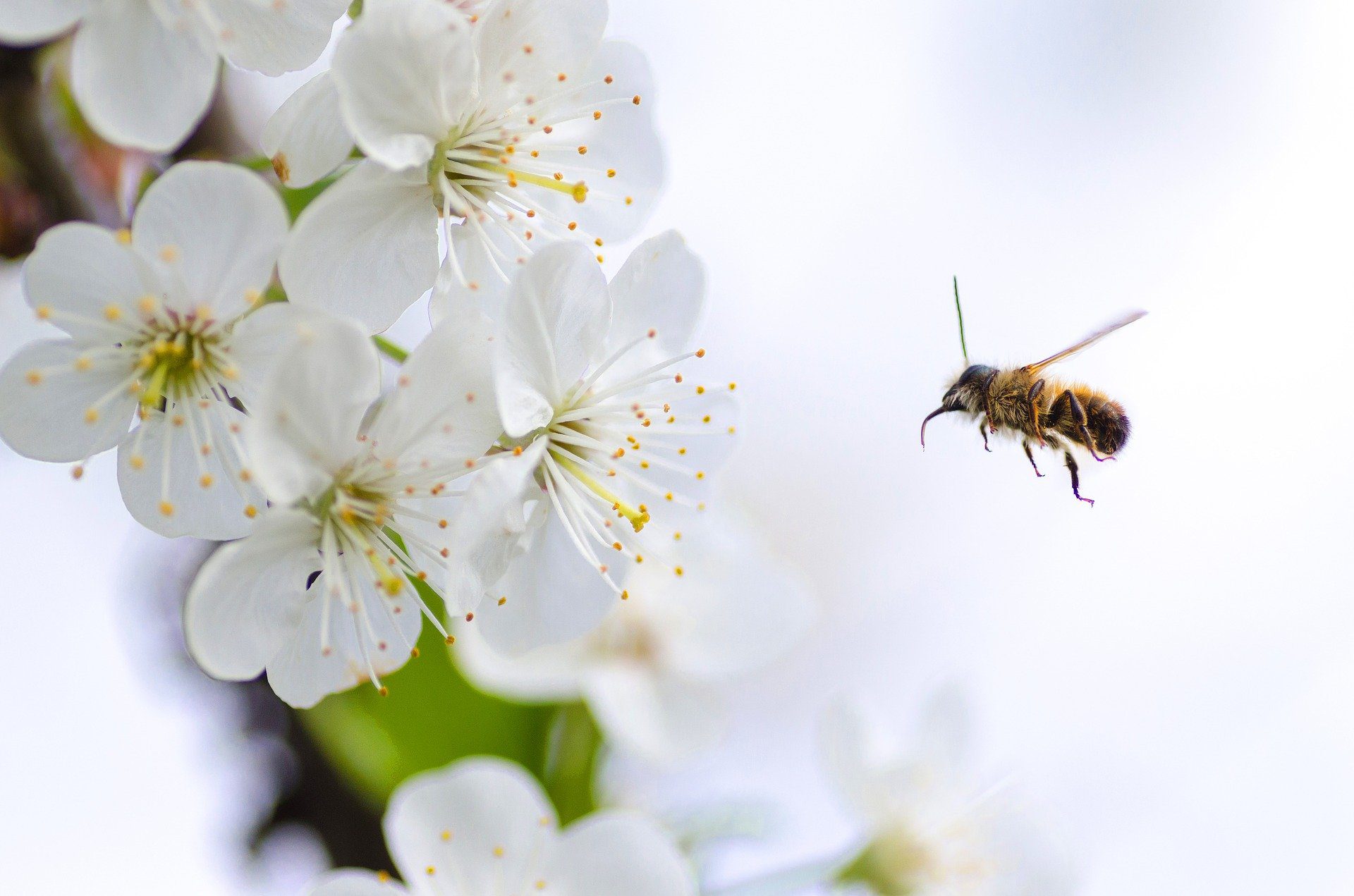
As the weather warms and daylight hours lengthen, there will be an increase in bee species on the hunt for nectar. You may be able to spot a wide range of bumblebees and mining bees along with short-lived mason bees. Try and identify any you see in your garden!
How you can help
- Have plants in your garden that offer spring nectar -e.g. Erysimum, Myositis (forget-me-nots), Muscari (grape hyacinths), Crocuses and flowering fruit trees (apples, pears, cherry etc.)
Read more: The Best Plants for Bees / Guide to Solitary Bees
Birds
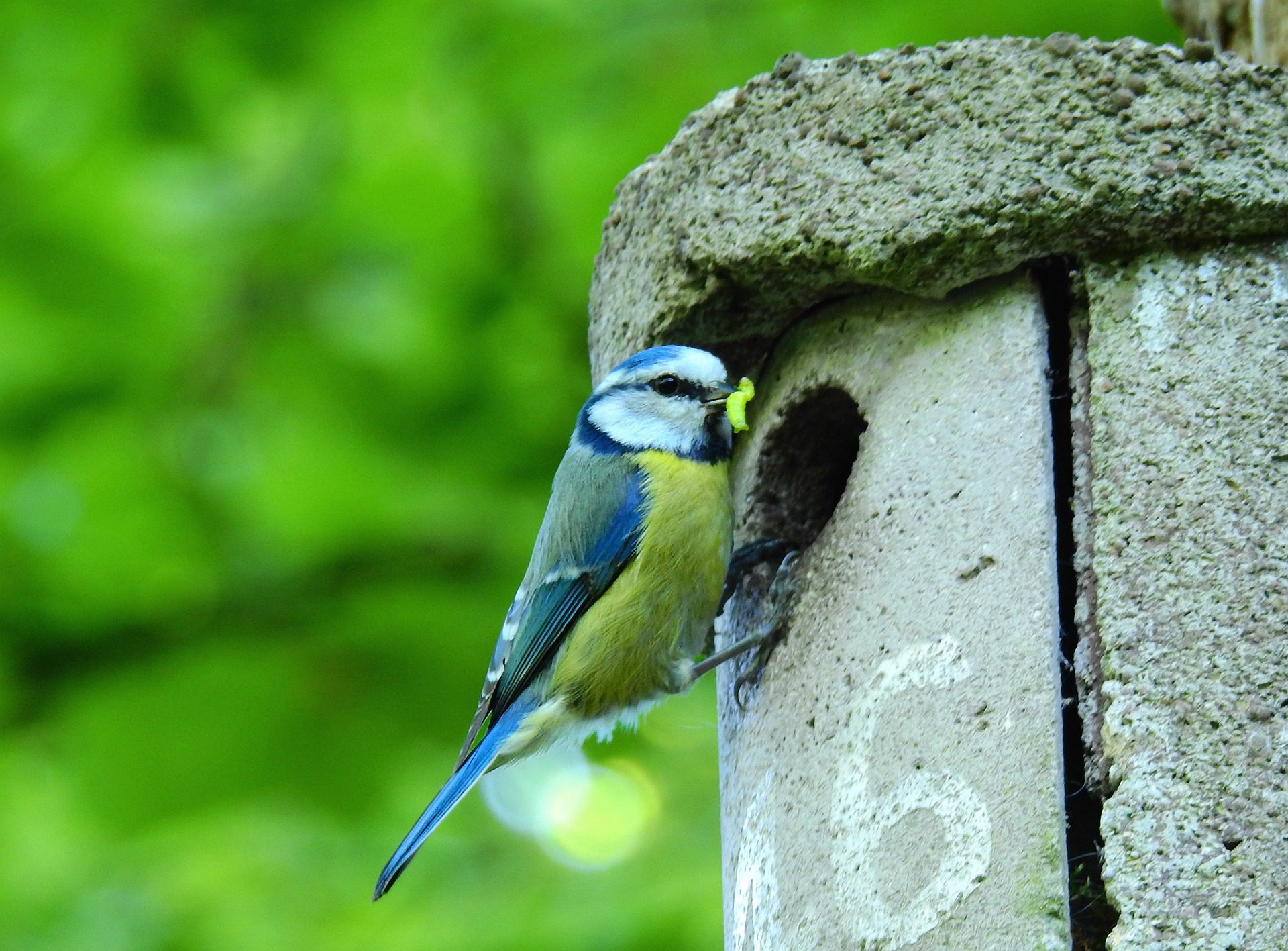
As winter bird species, such as fieldfares and waxwings, depart the UK, summer residents begin to return. House martins, whitethroats, sedge warblers, swallows, nightingales and cuckoos may all be seen arriving this month. Take time to stop and appreciate the sounds of the dawn chorus. If you want to identify the various birdsongs, the app Warblr uses audio recognition technology to detect the species from your recordings. Nesting season is here, and blue tits and blackbirds may have their first brood this month.
How you can help
- Avoid cutting hedges between March and August, so as not to disturb any nesting species. Wild bird nests are protected by law under the Wildlife and Countryside Acts of 1981, although this tends not to apply to garden hedges
- Offer high-protein bird food sources to support breeding species, such as sunflower seeds, mealworms and calciworms
- There is still the chance of a frost in April. Break ice on bird baths and water bowls if needed and refresh the water supply daily
Read more: Supporting Birds in Spring
Butterflies
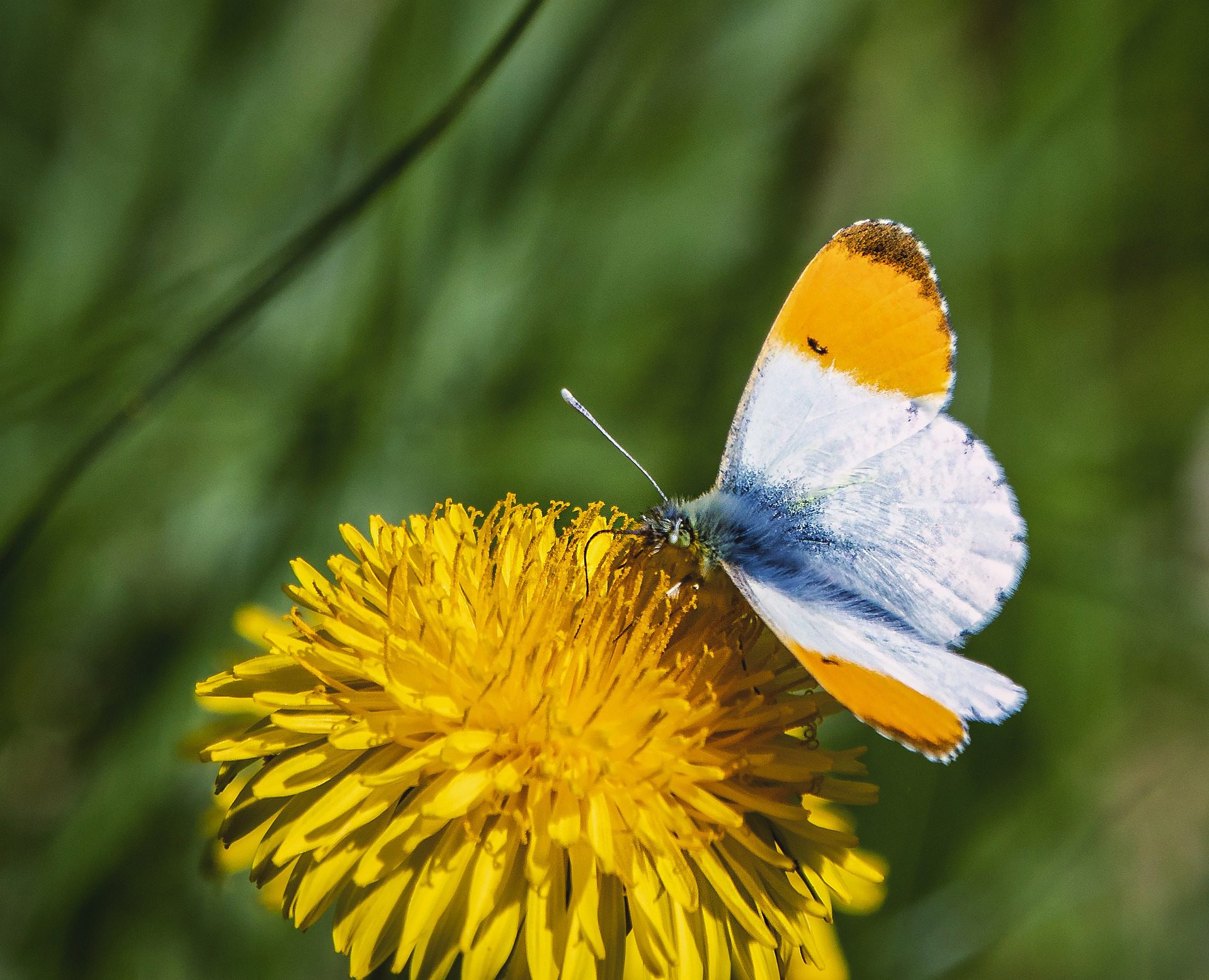
Warm days will bring a growing number of butterflies to your garden, looking for nectar-rich plants. Species you may spot include brimstone, orange tip, large white, small white, red admiral painted lady, peacock, small copper and holly blue.
How you can help
- Grow plants for spring nectar. Good options include Erysimum (wallflowers), Ivy and Muscari (grape hyacinths)
- Position these in a sunny, sheltered spot where butterflies can easily land
- Leave dandelions growing in your lawn – they are a valuable source of early spring nectar
Frogs and Toads
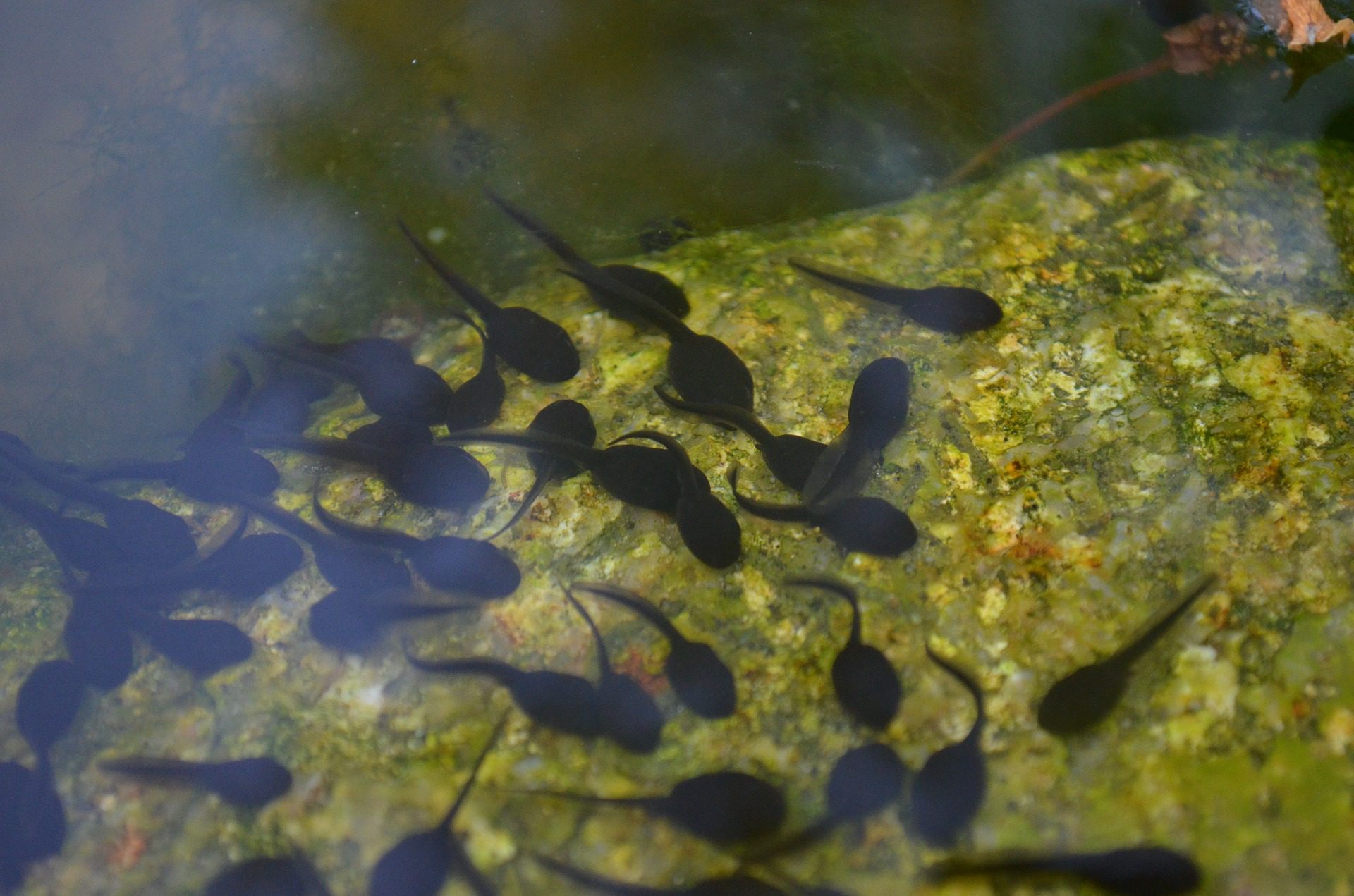
Towards the end of the month, tadpoles will hatch from frog spawn and toad eggs laid in ponds. Keep a close watch for the appearance of the wriggling, churning mass! Adult frogs will leave the pond in search of food, catching various insects with their long tongues.
How you can help
- Wildlife ponds in the garden are a fantastic way to support a variety of creatures, including frogs and toads
- As frogs are feeding on insects, avoid the use of any chemicals in your garden at this time that could pass up the food chain
- Consider netting your pond to prevent herons catching frogs (and fish)
Hedgehogs
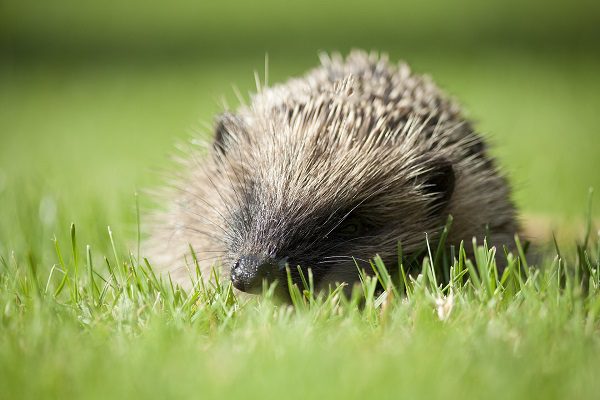
Hedgehogs finish emerging from their winter hibernation in April (in a mild year, they will be on the move again from late March). This is the start of their breeding season. Hedgehogs breed annually from when they are two until they die. They typically have one litter of hoglets, born in early to mid-summer. It is sometimes known for hedgehogs to have a second litter in autumn, but young born at this time will struggle to gain enough weight to survive through winter.
How you can help
- This is a vital time to leave a source of food and clean water. You can get specially designed hedgehog foods that are high in protein. Alternatively, cat food is fine but opt for chicken-based kibble
- Create wild areas in the garden with longer grass, log piles etc. You could also purchase a hedgehog house, as a place to raise young
- If you have not yet done your first mow and strim of the year, make sure to check carefully beneath any piles of leaves, logs and compost for hedgehogs when you do. Hedgehogs are injured by lawn machinery every year – especially strimmers
- Hedgehogs love to roam, travelling up to a mile a night to feed and find a mate. One of the most important things you can do is to allow free movement between neighbouring gardens. This could be as simple as a small hole at ground level between fences. You can also purchase special hedgehog crossings if you would like to make a feature of it
Read more: How to Create a Hedgehog Friendly Garden
Ladybirds
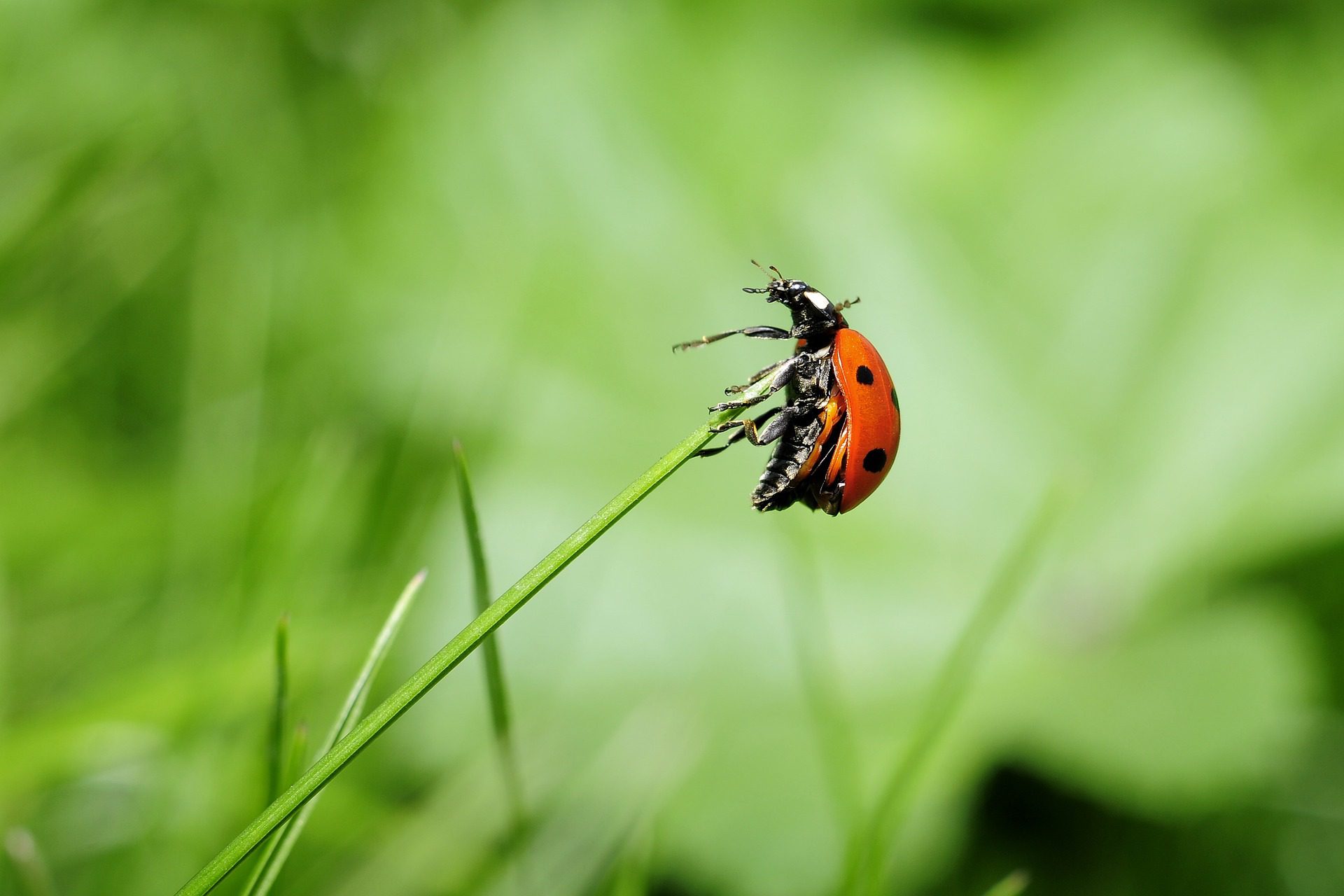
Ladybirds can be spotted again in April – they may have emerged from hibernation in March if the weather was mild enough. They will be on the search for food, then looking to return to a spot to hide and nest. Ladybirds typically mate in May.
How can you help
- Ladybirds feed on small insects and aphids. A garden supporting a complete ecosystem will naturally attract more ladybirds
- Put out ladybird towers so they have a safe place to conceal themselves
April Dates for Your Diary
Earth Day | 22nd April
Since 1970, the non-profit organization EARTHDAY.ORG has set itself the ambitious mission to grow the environmental movement worldwide. They work with more than 150,000 partners in almost every country of the world to drive positive action for the planet. The theme in 2021 was ‘Restore our Earth’
Look out for…
National Gardening Week | 1st May – 7th May
Founded by the Royal Horticultural Society (RHS), National Gardening Week is the UK’s largest celebration of gardening. Each year takes a different theme; 2021 focused on the positive role of plants and gardens on mental and physical health.
https://www.rhs.org.uk/get-involved/national-gardening-week/
Was This Article Helpful?
Join the Hillier Gardening Club to get the latest gardening news and advice
Find Out More

